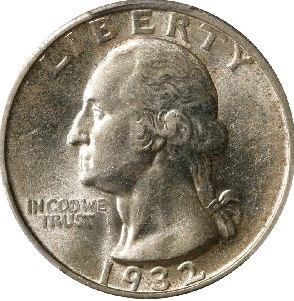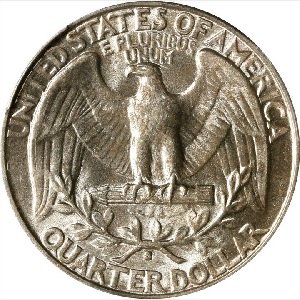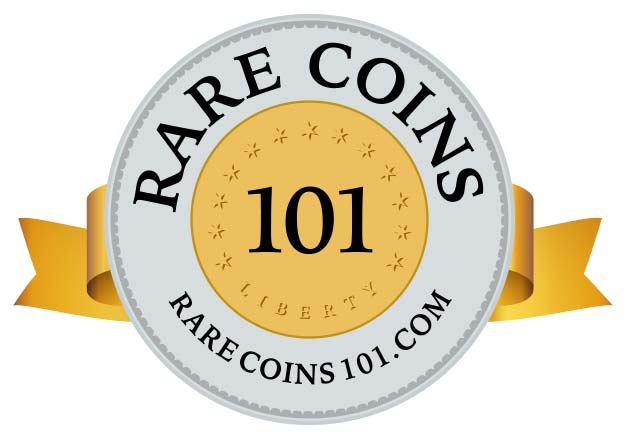1932-S Washington Quarter
The story of the 1932-S Washington quarter closely mirrors that of the 1932-D.
As the 1932 bicentennial of George Washington’s birth approached, the Treasury Department, in conjunction with the advisory Commission of Fine Arts (CFA), proposed the issue of a medal and commemorative half dollar coin to honor the nation’s first president. The public was invited to competitively submit designs.(1)
The clear winner, in the opinion of the CFA, was Laura Gardin Fraser, the accomplished sculptor wife of James E. Fraser, whose Buffalo nickel design had already won wide acclaim.
Plans for a Washington commemorative coin were soon scrapped. Instead, on March 4, 1931, Congress approved a regular issue quarter with the mandate it featured the image of Washington. It was to be modelled on the lionized Houdon bust preserved at Mt. Vernon. Once again, an open contest was organized to select a design.
The CFA objected to the second competition, strongly recommending to Treasury Secretary Andrew Mellon that Fraser's design be adopted for the new quarter. Mellon refused and proceeded with the competition.
More than 100 entries were submitted, including Fraser's design, modified to fit on a quarter. Also among the contestants was John Flanagan, a former student of the famous sculptor, Augustus Saint-Gaudens. Once again, the CFA favored the work of Fraser, but Secretary Mellon preferred the design of Flanagan.
The CFA and Mellon argued back and forth for several months. Before the issue was settled, Mellon left to become President Hoover's ambassador to Great Britain. His successor, Ogden Mills, bluntly informed the CFA Flanagan’s selection was final and the debate was over.
The new Washington quarter entered everyday American life on August 1, 1932. Caught in the throes of the Great Depression, coinage of many denominations was limited during the early to mid-1930s. Only 408,000 Washington quarters were struck in 1932 at the San Francisco Mint. Its running mate, the 1932-D, fared little better, with just 436,800 pieces issued. These mintages rate near the lowest of 20th century United States coins.(3)
Both the 1932-D and 1932-S circulated for many years with little appreciation from hobbyists. Finally, in the 1950s, collecting Washington quarters became a popular pastime. As the scarcest dates in the series, the 1932 branch mint pair rose to prominence, where they have remained since.(4)
Fascinating Fact: Laura Gardin Fraser, who many felt was the most deserving in 1932, belatedly received a great honor. In 1999, 33 years after her death, her Washington design was selected to grace the commemorative half eagle observing the 200th anniversary of the death of the first U.S. President.(5)
| Estimated survivors in all grades: 40,000 ?
The survivor estimate from PCGS represents an average of one or more experts' opinions as to how many examples survive of a particular coin in all grades. Survival estimates include coins that are raw, certified by PCGS, and certified by other grading services. Learn more at PCGS. |
| PCGS Rarity Scale: 2.6 ?
The 'PCGS CoinFacts Rarity Scale' assesses the relative rarity of all U.S. coins, based on estimated surviving examples. The scale runs from 1.0 to 10.0. The higher the number, the rarer the coin.
Learn more at PCGS. |
| Click HERE to check for availability on eBay** |
Preview of eBay selection:
 |
 |
| Trendline Avg = 5.77 | CLASSIC RARITY |
Historic Value Trend Charts:
| Last updated 4-8-25 | Return to Key Date Coin List | |
| Compare to Common Date Coin of Same Type | ||
|
|
||
| Download Charts to Your Computer | ||
Sources
1. Taxay, Don. The U.S. Mint and Coinage. New York, NY: Sanford J. Durst Numismatic Publications, 1966.
2. Stack's Bowers Galleries. 1932-S Washington Quarter. Mar 2020 Auction.
3. Heritage Auctions. 1932-D 25C. Jan 2018 Auction.
4. PCGS. 1932-S 25C (Regular Strike).
5. NGC. 1999 W GEORGE WASHINGTON $5 MS.
**Many very fine coin dealers sell on eBay. At any point in time, there may be over one million search results for United States coins. This includes quite a few of the recommendations on our Key Date Coin List.
If you’re thinking about purchasing a rare coin, eBay is certainly worth a look. For your convenience, the links from this site to eBay are coded to bring up only coins certified by PCGS and NGC.
As is always, always the case, never buy a valuable coin from a seller whose trustworthiness cannot be verified. Learn more about this at our chapter Best Places to Buy Coins, which also has a section on doing business on eBay.
In the interest of full disclosure, Rare Coins 101 receives a small commission anytime someone connects to eBay from this site and purchases something.
Coin images by Stack's Bowers Galleries.


